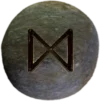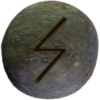Last Updated on December 29, 2024


Asatru (pronounced AH-sah-troo) continues to exist as a thriving spiritual practice for many. However, it may appear to be “dying out” due to several interconnected factors. First, its adherents often practice privately, which reduces its visibility. Many Asatruar avoid publicizing their beliefs, fearing misrepresentation or misunderstanding from outsiders. This creates an illusion of decline when the faith remains vibrant in personal and community settings.
Modern Asatru also struggles against the backdrop of mainstream religions and secularization. Popular traditions often dominate public discourse, leaving smaller faiths like Asatru overshadowed. Without large institutions or centralized leadership, Asatruar may seem scattered, and on the brink of dying out, but this decentralized nature reflects ancient practices and remains intentional.
Negative associations in some media and misuse of Norse symbols by certain groups have also harmed perceptions of Asatru. Many Asatruar work tirelessly to reclaim their faith’s true meaning, but lingering misconceptions persist. These challenges create an impression of instability when, in reality, the faith evolves and strengthens.
Lastly, global trends affect all religions, including smaller movements like Asatru. Many people seek spirituality in more individualistic ways, bypassing organized or community-based practices. For Asatru, this sometimes translates to solitary worship rather than the growth of Kindreds or other groups. While this adaptation changes its outward expression, it ensures Asatru is not dying out.
The faith’s persistence lies in its ability to adapt while holding onto its roots. Though fewer people may openly identify as Asatruar, the values, traditions, and connection to the Norse gods endure through private devotion and communal efforts.
Elder Futhark Runes and Asatru’s Challenges
The Elder Futhark rune Tiwaz (ᛏ, pronounced “TEE-wahz”) symbolizes resilience and justice, resonating with Asatruar reclaiming their faith’s integrity. Just as Tiwaz embodies the unyielding strength of Týr, Asatruar must remain steadfast in the face of misconceptions and external challenges. ![]()
The rune Dagaz (ᛞ, pronounced “DAH-gahz”) represents transformation and new beginnings. It reminds Asatruar that perceived decline offers an opportunity for renewal and growth, allowing the faith to evolve. Together, these runes guide Asatruar through trials, ensuring their traditions survive and flourish.
Why the Question of Asatru Dying Out Matters
The question of Asatru’s perceived decline touches on the faith’s survival, authenticity, and relevance. For many Asatruar, preserving their spirituality amidst external misconceptions and internal struggles requires constant effort. This question inspires conversations about community building, public perception, and the balance between ancient traditions and modern needs.
By addressing this topic, Asatruar reaffirm their commitment to the gods and the values of honor, resilience, and kinship. Far from a sign of weakness, the willingness to engage with such challenges strengthens their bond to their faith.


